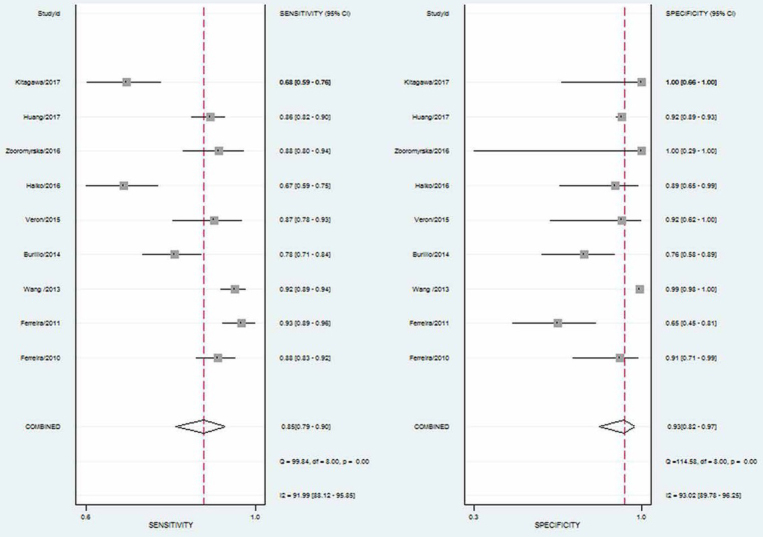Matrix-assisted laser desorption ionization time of flight mass spectrometry (MALDI-TOF MS) has turn out to be one of the hottest strategies for the speedy and cost-effective detection of medical pathogenic microorganisms.
This research aimed to guage and evaluate the diagnostic efficiency of MALDI-TOF MS with that of standard approaches for the direct identification of pathogens from urine samples.
A scientific evaluation was performed primarily based on a literature search of related databases. The pooled sensitivity, specificity, constructive chance ratio (PLR), adverse chance ratio (NLR) and space underneath the abstract receiver working attribute (SROC) curve of the mixed research had been estimated.
Nine research with a complete of 3920 topics had been thought of eligible and included in the meta-analysis. The pooled sensitivity was 0.85 (95% CI 0.79-0.90), and the pooled specificity was 0.93 (95% CI 0.82-0.97). The PLR and NLR had been 11.51 (95% CI 4.53-29.26) and 0.16 (95% CI 0.11-0.24), respectively.
The space underneath the SROC curve was 0.93 (95% CI 0.91-0.95). Sensitivity evaluation confirmed that the outcomes of this meta-analysis had been secure. MALDI-TOF MS might straight establish microorganisms from urine samples with excessive sensitivity and specificity.

Intact cell MALDI-TOF mass spectrometry, a promising proteomic profiling technique in farm animal medical and replica analysis.
The goal of this evaluation is to offer new insights into the potential use of a proteomic technique often known as Intact Cell Matrix-Assisted Laser Desorption-ionization Time-Of-Flight Mass Spectrometry (ICM-MS) in animal medical analysis.
Here, we give an outline of the fundamentals of this method, its benefits and drawbacks in contrast with different proteomic approaches, previous functions and future views. A particular emphasis on its implementation in animal replica science is given, together with examples of the dependable use of ICM-MS on fertility screening.
In mammals, the ICM-MS profiles from pig epididymal spermatozoa replicate the proteome modifications that they endure throughout epididymal maturation and could possibly be related to the acquisition of fertilizing means.
In hen, utilizing sufficient pre-processing and bioinformatics evaluation instruments, sperm ICM-MS profiles confirmed attribute spectral options that allowed their classification in accordance with their precise fertilizing means.
The affiliation of ICM-MS and Top-down proteomic methods allowed the identification of hen fertility biomarkers candidates akin to protein vitelline membrane outer layer protein 1 (VMO-1) and avian beta-defensin 10 (AvBD10).
In feminine replica, an identical strategy on ovarian follicular cells allowed the identification of particular markers of oocyte maturation in the oocyte and surrounding cumulus cells. Altogether, these outcomes point out that ICM-MS profiling could possibly be an appropriate strategy for molecular phenotyping of female and male gametes.
